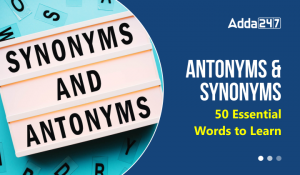
Directions (1-10): In the following passage there are blanks, each of which has been numbered. These numbers are printed below the passage and against each, five words are suggested, one of which fits the blank appropriately. Find out the appropriate word in each case.
A recent issue of a language learning magazine has consulted a number of experts in the ….(1) …. of second language acquisition. Their advice may prove invaluable for those ….(2) …. a language course.
One suggestion is that you ….(3) ….whether you are likely to be successful at learning a language or not. Did you enjoy studying languages at school, for example? Do you have enough time to learn a language? The main ….(4) … will be your own time and effort. Therefore you must make sure that the course on offer leads to a …..(5) …. qualification.
Also, be realistic in your goals. If you don’t set achievable aims you are more likely to give up. Do not be deceived ….(6) …. thinking that the most expensive courses are the best. …..(7) …. around to get the best possible value for money.
You should also bear in mind that the quicker you learn a language the more quickly you forget it. Sandra Miller, a French teacher, tried to teach herself German by enrolling on a crash course. Already fluent in four languages and with a sound knowledge of teaching methodology her chances of ….(8) ….. progress were high. Three years ….(9)…… she remembers very little. She feels her biggest mistake was not to build her previous studies. “I should have ….(10)…. what I’d learnt by continuing to study, even if it were by myself.”
Q1.
(a)domain
(b)branch
(c)field
(d)area
(e) region
Q2.
(a)wondering
(b)thinking
(c)looking
(d)considering
(e)following
Q3.
(a)assess
(b)review
(c)balance
(d)survey
(e) contemplate
Q4.
(a)charge
(b)cost
(c)price
(d)valuation
(e) thing
Q5.
(a)recognised
(b)understood
(c) valued
(d) regarded
(e)immediate
Q6.
(a)by
(b)about
(c)into
(d)in
(e)through
Q7.
(a) Nose
(b) Push
(c) Run
(d) Shop
(e) Look
Q8.
(a)achieving
(b)doing
(c) gaining
(d) making
(e) having
Q9.
(a) on
(b)forward
(c)from
(d)onward
(e) later
Q10.
(a) implemented
(b) Synthesized
(c) Consolidated
(d) Continued
(e) Enhance
Directions (11-15): Rearrange the following six sentences (A), (B), (C), (D), (E) and (F) in the proper sequence to form a meaningful paragraph and then answer the questions given below.
A. In 2011, he presented the Leonard Hastings Schoff Memorial Lectures at Columbia, and these form the basis of this posthumous book, an analysis of plot in drama and fiction.
B. Foundational largesse on such a scale certainly reinforces the impression that the life of a tenured professor at a major university resembles one long holiday, some of it spent with a beautiful view of Lake Como.
C. Not to sound philistine, but this seems an inordinate amount of money and time off, especially given the relatively small scholarly return.
D. According to the introduction by Russian scholar Robin Feuer Miller, “Plots,” though brief, reflects many years of thought and research.
E. A prefatory note by Belknap duly thanks “the Woodrow Wilson Fellowship Program, the Bellagio Center, the Kennan Institute at the Smithsonian Institute, the John Simon Guggenheim Foundation, the National Endowment for the Humanities, and the International Research and Exchanges Board.”
F. Robert L. Belknap was a longtime Columbia University professor and the author of two important studies of Dostoevsky’s “Brothers Karamazov.”
Q11. Which of the following should be the FIRST sentence after rearrangement?
(a)A
(b) B
(c) C
(d) D
(e) F
Q12. Which of the following should be the FIFTH sentence after rearrangement?
(a)A
(b) B
(c) C
(d) D
(e) F
Q13. Which of the following should be the THIRD sentence after rearrangement?
(a)A
(b) B
(c) C
(d) D
(e) F
Q14. Which of the following should be the FOURTH sentence after rearrangement?
(a)A
(b) B
(c) C
(d) D
(e) E
Q15. Which of the following should be the SIXTH (last) sentence after rearrangement?
(a)A
(b) B
(c) C
(d)D
(e) E
Solutions:
S1. Ans. (c)
S2. Ans. (d)
S3. Ans. (a)
S4. Ans. (b)
S5. Ans. (a)
S6. Ans. (c)
S7. Ans. (d)
S8. Ans. (d)
S9. Ans. (a)
S10. Ans. (c)
S11. Ans. (e)
Sol. The correct sequence to form a meaningful paragraph is FADECB.
S12. Ans. (c)
Sol. The correct sequence to form a meaningful paragraph is FADECB.
S13. Ans. (d)
Sol. The correct sequence to form a meaningful paragraph is FADECB.
S14. Ans. (e)
Sol. The correct sequence to form a meaningful paragraph is FADECB.
S15. Ans. (b)
Sol. The correct sequence to form a meaningful paragraph is FADECB.
Practice with Online Test Series for SBI and IBPS Prelims 2021:
Click Here to Register for Bank Exams 2020 Preparation Material



 English Language Notes for Competitive E...
English Language Notes for Competitive E...








